Diving into a new camera system
RAW advantages.

In underwater filming, as you go deeper, water filters out the red end of the natural light spectrum. To compensate for this you can either use lights or a red filter (typically designed to be used at depths over 10 meters). But what if you are shooting at that depth with a filter fixed to the lens inside the housing and on ascending, something amazing is happening near the surface.

Previously, with traditional video, you would end up with footage that is too red, to the extent that you cannot pull your colors back to what they should naturally be. But look how the Sony F55 handles it. Quite amazing.

When you film in very dirty green water without a filter you normally end up with something that looks awful. See here how the colors spring to life once very quickly treated in Sony RAW Viewer. The corrected colors are true to real life, I know what the correct colors are very well as I have been diving in these areas for many years. This test really blew my mind.
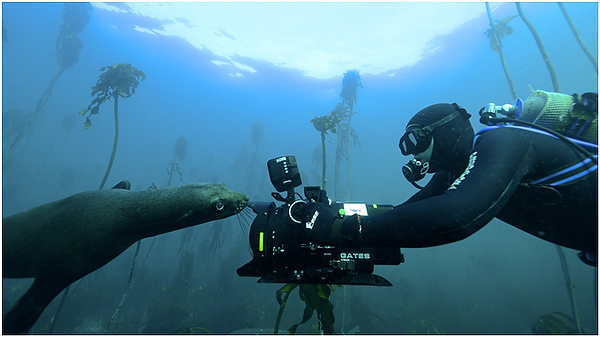
It feels to me that the Sony RAW truly is RAW in the way that I have associated RAW to be on a stills camera for so many years — you can’t set a compression ratio, which some people may regard as a hindrance because of the enormous files that are produced by the R5 RAW Recorder, but having seen just what you can achieve with them, I can say it’s a sacrifice worth making. Of course with the F55 we also have the option to shoot 4K in XAVC @ S-Log2 which still retains the great dynamic range of the camera — this could be a feature we end up using on long shoots in remote locations, where storage space can be an issue. This will of course require a different mind-set regarding shooting. Getting in on the F55 in the early stages is helping us to establish a reputation with the system, and indeed it has already started to generate work. The camera has been used for blue-chip natural history productions, a TV series, and a couple of TV commercials. We’ve also been diving with it ourselves extensively in development of our 4K stock footage library.
Charles has been in the stock footage business for so long that he knows exactly what sells, so we have the advantage of being very targeted with what stock footage we go out to shoot. Every time we go to sea to gather stock footage it costs money — fuel for the boat, launch fees, skippers fees, and bait. Of course there is also the time it takes to catalog and manage all the footage as well as the cost of keeping three copies of the footage as back-ups in different locations. In this sense Charles’ experience in the field is invaluable — and we are really able to maximize our time on the water. This industry is cyclical — there will come a time when we’ll need to go out and reshoot everything we are shooting now in whatever the next acquisition format will be, but we enjoy the process, at heart we are people who love being out on the ocean. In Cape Town we have an abundance of subjects at our disposal because we are at the meeting point for two great oceans, the Indian and the Atlantic. Cold, nutrient-rich water from the Benguela current and warm water from the Mozambique current give us an amazing natural biodiversity both underwater and on land, so we can dive with seals, a plethora of sharks (including one of the best places in the world for filming great white sharks), kelp forests and many others subjects and ecosystems. Getting the F55 out into some of these areas, and testing it’s capabilities has been really exciting, and we’ve not been disappointed by the results.
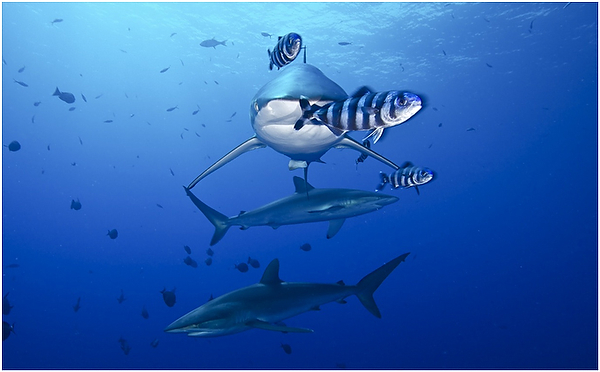
It’s our hope that the F55 will stand the test of time, and the demand for 4K stock footage will continue to grow. Everyone is talking about the F55 being a five-year camera, which I hope is the case. Sony’s recent announcement of a hardware upgrade to allow shooting ProRes is a good sign — it shows a commitment to the system, and that there will be more upgrades to come. I have faith in Sony in this regard — I hope that they realize that it was a gamble for customers to buy the camera with it’s original firmware version which was quite limited, and having to rely on the firmware roadmap and trust in Sony that they would come good on their promises. Of course this has been the case, and in-fact they’ve delivered more than they promised — one of the benefits of working with such an established company that has a reputation to protect. Whether it be more firmware upgrades or hardware upgrades we need to pay for, they are all welcome. Once again, when it comes to changing cameras, for us it also means changing underwater housings, as generally newer cameras do not fit into older housings, so the longer life span we can get out of the system, the better. Back-up and support from Sony has been excellent locally. It’s reassuring knowing we’ve got a good team of technicians nearby if the camera does develop a fault.
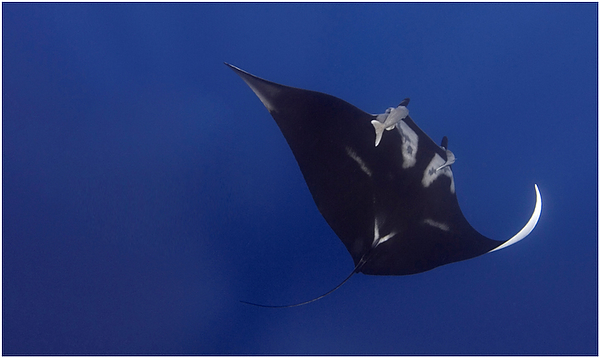
The recent addition of the record cache is also a great sign, it’s so important for natural history work. For now it is quite limited, but it’s my hope that this will be increased in future firmware versions, or with a hardware upgrade. Hopefully with a future hardware upgrade we’ll also be able to get higher frame rates when shooting at 4K. I have to admit to feeling a little bit limited when it comes to being able to shoot high frame rates at 4K. I would put at the top of my list for Sony to start work on the ability to shoot 4K RAW @ 120fps. 120fps 4K in XAVC would be a welcome alternative.
With the F55 it’s amazing how much you can pull back in the highlights and lowlights by adjusting your ISO — which of course for underwater is fantastic. So many situations in underwater work have high-contrast, where subjects with white patches such as manta rays (dark on top and white underneath) are a challenge to expose for. Now being able to shoot RAW with the F55 this is no longer a concern. Charles shot some material in a swimming pool on the F55 for a TV series — backlit of an actress swimming through frame. The highlights and lowlights both looked amazing, even straight off the camera. This footage was shot at about 5000 ISO — there was hardly any grain. This was shot XAVC @ HD, as the client only required it to be in HD — which leads me onto another point. The fact that we are able to shoot in HD (or 2K) and we do not worry about the image being cropped or “windowed”, is fantastic with the Sony.
Lens choices.
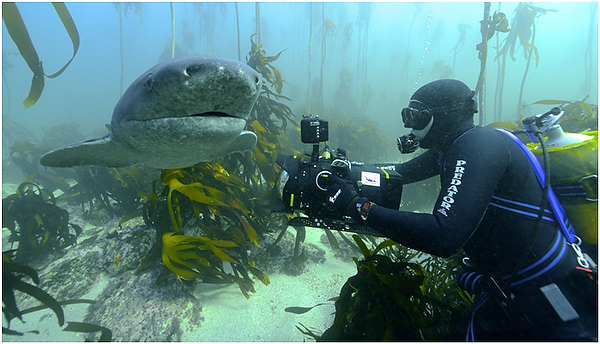
Wide-angle lenses are important in underwater work — we use them all the time as underwater you have to remain close to your subject, if you back away you shoot through more water, degrading the image. One of the golden rules in underwater work is “get as close as you can, then get closer”. Much of our work is with large animals, so again wide angles are really important for us. Not having to worry about the sensor cropping if we shoot at lower resolutions is a real bonus, we can swap between resolutions with no impact on the coverage of our lenses.
On the topic of lenses, I can’t deny that I miss the days shooting with my Sony F-900R with the Canon HJ11 lens. This combination allowed me to shoot marine subjects from the largest in the ocean such as whales and sharks, to some of the smallest such as nudibranchs (sea-slugs). With its zoom range and close focusing, it really was a dream. Oftentimes underwater you only have one opportunity to capture a behavioral sequence, if you don’t get everything on that dive, you may not witness it again. We do not have the luxury of changing lenses underwater. In this regard the F55 underwater system has its limitations — but this is not a failing on the part of the housing, its simply that the technology does not exist at the moment to have the same kind of flexibility in one lens.
We have set ourselves up with a range of lenses with Nikon mounts including the Tokina 11-16mm, Sigma 17-70 and 60mm macro. These are working just fine for us, but having something with the flexibility of an ENG style lens in the future would be fantastic. I have been thinking about options for using Sony’s B4 to FZ lens adapter with an ENG lens in our underwater housing, but it’s my feeling a lens originally designed for HD imaging will not be strong enough optically for working in 4K. I think the lens technology will catch up soon enough, and we’ll just look back on the time we are in now as an awkward transition period.
Housings.
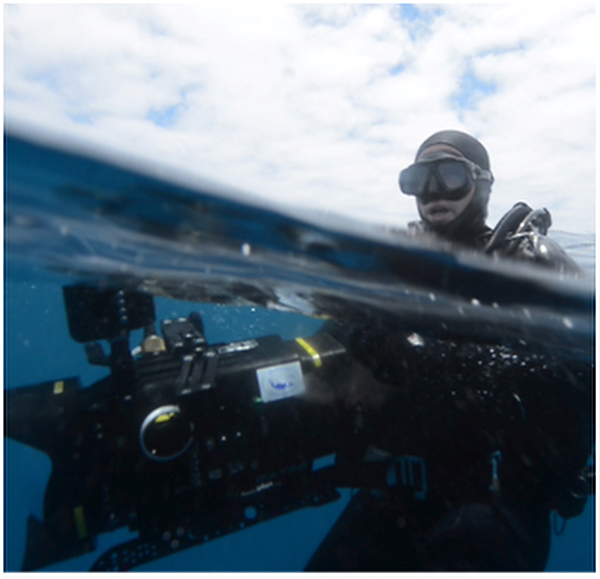
Our underwater housing was built by Gates Underwater Products of San Diego. People are often shocked when they first start looking into the costs involved in underwater housings, but for us this is par for the course, and I wouldn’t want to put my beloved F55 in a sub-standard product! Gates’ optics are second-to-none, and this is essential. There’s no point having such a fantastic camera and lens stuck behind sub-standard optics, degrading the image. Gates have also worked hard to make the housing as versatile as possible. We can shoot with or without the R5 RAW recorder, and with larger batteries to give us longer run times. John Ellerbrock and his team have provided us with fantastic support when it comes to advice and back-up with the system, they’re an essential part of our crew.
Getting to grips with the F55 has been a steep learning curve, and we’re still continuing to learn about its potential. I’m not sure I’ll ever have a camera that I am 100% happy with in this fast changing world, but with the F55, I have come pretty darn close.
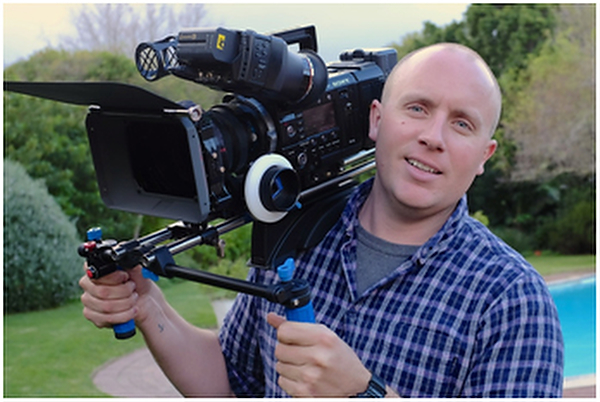
About the author:
Dan Beecham is an underwater cameraman based in Cape Town, South Africa. With business partner Charles Maxwell he shoots on the Sony F55 with the Gates underwater housing.
This article first appeared in Sony’s CineAlta magazine
Return to page 1.